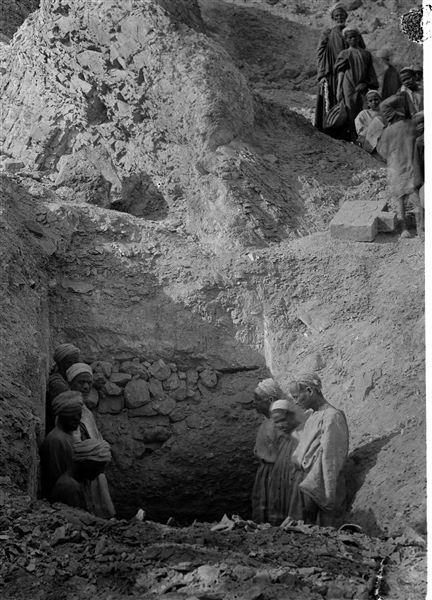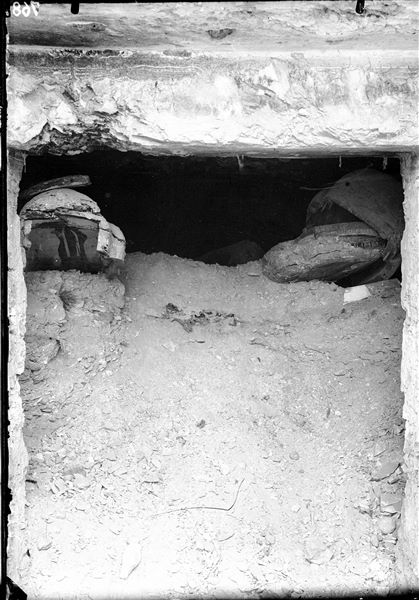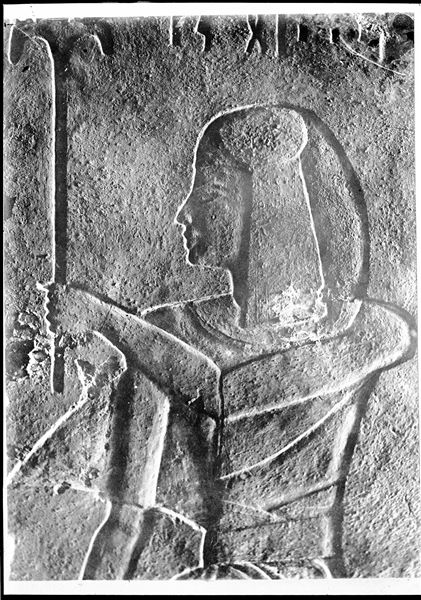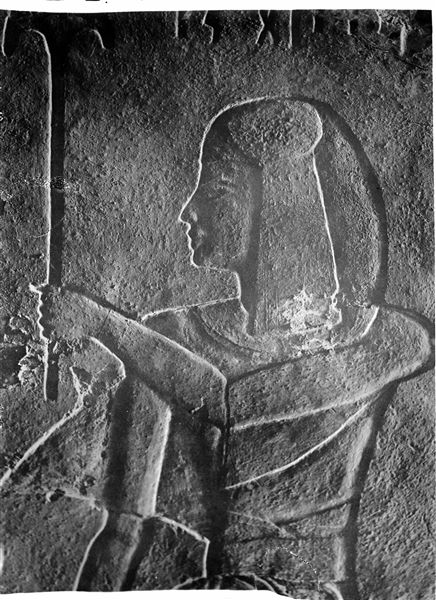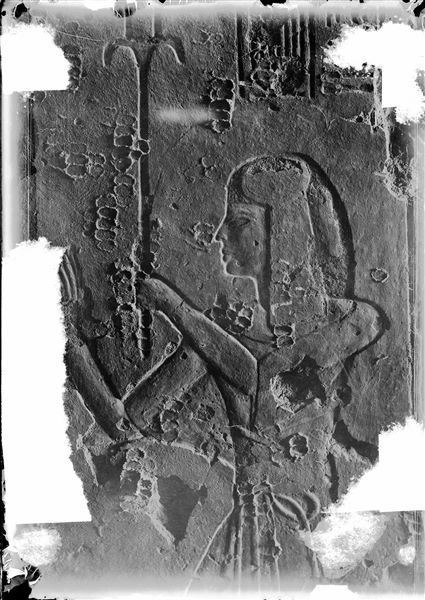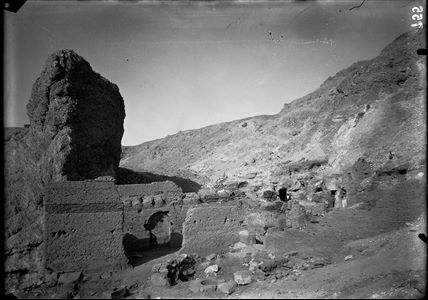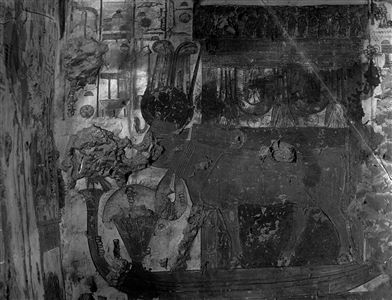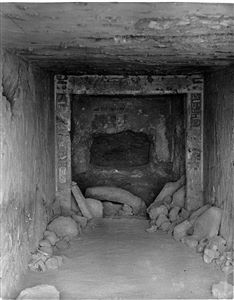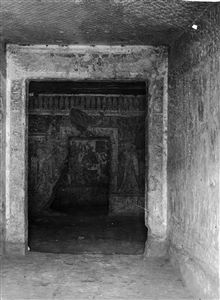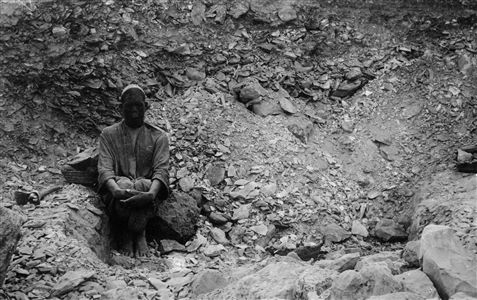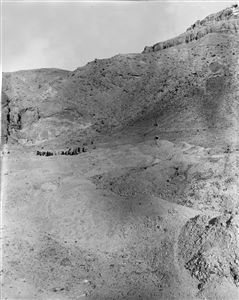Excavating to access the tomb of Prince Sethherkhepeshef (QV43). (Original label: Discovery of the tomb of Prince Setirchopeshfu). Schiaparelli excavations.
The entrance to the tomb of Prince Sethherkhepeshef (QV43) at the time of its discovery. There is a substantial deposit of limestone fragments and sand progressively transported into the passage by repeated flooding. Remains of sarcophagi are clearly visible on the upper surface which may have also arrived together with the alluvial deposits, or (more likely) are a result from the reuse of this tomb in later periods. Schiaparelli excavations.
Depiction of Prince Sethherkhepeshef on the west wall of the first corridor in his tomb (QV43). Schiaparelli excavations.
Depiction of Prince Sethherkhepeshef on the west wall of the first corridor in his tomb (QV43). Schiaparelli excavations.
Depiction of Prince Sethherkhepeshef on the west wall of the first corridor in his tomb (QV43). The prince is holding a large feather-fan, not visible in this photograph. Schiaparelli excavations.
West wall of the corridor from the tomb of Sethherkhepeshef (QV43), son of Pharaoh Ramesses III. The image depicts Ramesses III. Schiaparelli excavations.
East wall of the corridor from the tomb of Sethherkhepeshef (QV43), son of Pharaoh Ramesses III. The image depicts the god Re-Horakhty.
West wall from the second corridor in the tomb of Prince Sethherkhepeshef (QV43) with a depiction of Pharaoh Ramesses III wearing the Hemhem crown.
